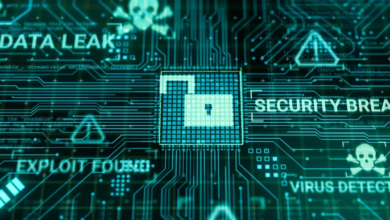Cybersecurity threats biggest networking challenge to public sector

More than two-thirds (63 percent) of public sector organisations have seen an uptick in network security threats over the last 18 months.
A new report from Daisy Corporate Services (Daisy) surveyed 250 IT decision-makers in the UK, including public sector organisations. Out of those, 71 percent said that cybersecurity threats are the biggest networking challenge they currently face, with 85 percent of organisations stating that remote and hybrid working is the biggest contributor to heightened threat levels.
The ‘State of Networking Report 2024’ highlights that growing network complexity is making it more difficult and costly for organisations to secure and manage their networks. It discovered more than half of public sector organisations (56 percent) said their current network is made up from a patchwork of different vendor technologies, and 93 percent say this has created network management issues. Unsurprisingly, 88 percent of organisations state that simplifying their network infrastructure is now a priority.
There is also increased pressure is being put on many networks due to the number of cloud applications being used in the workplace, according to 72 percent of those in the public sector surveyed.
More than a third of organisations (40 percent) said ensuring cloud application performance was one of the main networking challenges they face. Yet even seemingly simple upgrades – such as moving to the newer WiFi 6 standard is a challenge for many, with 45 percent of saying the cost of upgrading devices is delaying their move to WiFi 6. In fact, only 20 percent of those surveyed currently have WiFi 6 deployed across most of their organisation.
If you liked this content…
Legacy technology hampering sustainability goals
Despite being aware that they need to simplify and update their network infrastructure, 21 percent of IT budgets is currently still spent on maintaining legacy network hardware.
Legacy technology is also a significant factor in whether organisations can meet their sustainability goals, with legacy network hardware accounting for a third (27 percent) of organisations’ overall IT power consumption. More positively, the majority of organisations (96 percent) believe modernising their network infrastructure will contribute to them meeting ongoing sustainability targets.
But being able to dispose of legacy equipment in an environmentally friendly way remains a challenge for 68 percent of public sector organisations.
“At a time when the network perimeter is becoming increasingly virtual and a growing number of business processes and applications are online, it has never been so important to be able to maintain and manage a secure boundary between your network and the outside world,” said Joel Cunningham, head of connect at Daisy. “Simply hoping your remote employees will enable a VPN outside the office doesn’t constitute a robust network security strategy.
“Legacy networking equipment remains a huge cost centre, preventing organisations from reaching their sustainability goals and causing significant overspend across maintenance and power consumption,” said Cunningham. “The traditional approaches to managing wide area networks (WANs) often fall short in addressing these complex issues. However, Software-Defined Wide Area Networking (SD-WAN) has emerged and evolved into a transformative solution. This powerful technology not only solves the problem of optimising network performance but enhances security measures, giving organisations an edge in the ever-evolving threat landscape.”



